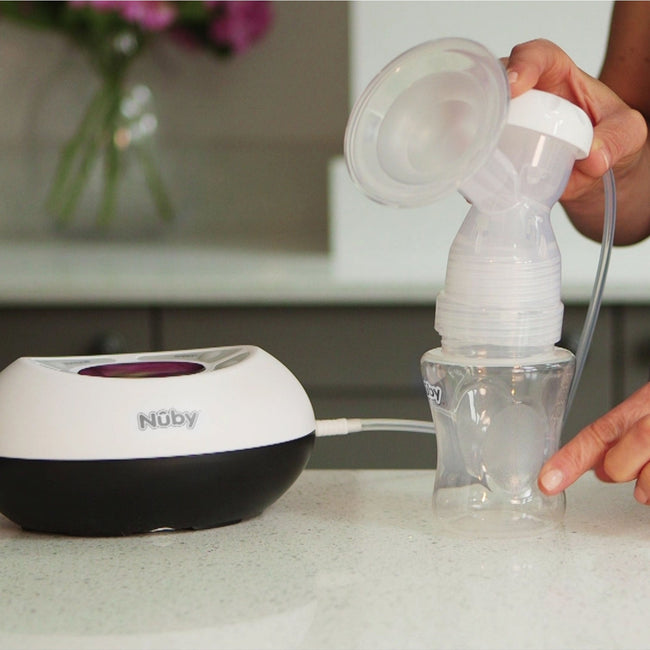Breastfeeding can take time and patience to get right. Your baby is unique and so are you. You need to work out together the best way to suit you both.
One thing that’s vitally important for anyone breastfeeding is to make sure you’re comfortable and relaxed when you begin. You certainly don’t want a dead arm or be gasping of thirst five minutes in. If you’re calm and happy, these feeling translate to your baby and they’ll be relaxed and happy too.
Before you start, get a glass of water ready in case you need it.
There are lots of different positions commonly used for breastfeeding. Choose whichever feels most comfortable for you and your baby and take it from there.

These are some of the most widely used breastfeeding positions:
1. Lying on your side
Side lying works well for night-time feeds or if you’re feeling especially sleep-deprived. This one’s also good for mums who’ve had a c-section as it avoids any pressure on your scar.
First off, lie your baby on their back making sure there are no pillows or duvets close to baby’s face.
Lie on your side facing your baby, with a pillow to support your head and one between your legs for extra comfort. You may also find a rolled-up towel or pillow behind your back provides additional support.
Turn your baby towards you in a straight line with their nose lined up to the nipple of your lower breast. Make sure your baby’s body isn’t twisted and they are tucked tightly into you.
Guide your baby’s mouth towards your nipple until they secure a good latch to feed.
2. Cradle hold
Perhaps the most well-known position for breastfeeding, the cradle hold involves holding your baby across your body, supporting their neck, back and bottom.
Get yourself comfy in a chair with armrests or cushions to support your arms before you start. To stop you from slipping forward and for a more relaxing position, it can also be useful to use a stool or table to rest your feet on.
Hold your baby on your lap facing you and tuck their arm under yours. Their body should stay in a straight line. Cradle them in towards you and guide their mouth towards your nipple until they latch on.
3. Cross-cradle hold
The main difference between the cradle-hold and the cross-cradle, or crossover, hold is the positioning of your arms. Instead of cradling your baby in the crook of your arm, you use that arm to hold and position your breast. Your other arm is then used to support your baby.
This position makes it easier to see your nipple and your baby’s mouth so can be ideal for babies that have trouble getting latched on or for newborns.
As well as giving greater visibility to guide your baby to latch on, this hold can free up one of your arms for other children or toddlers.
4. Rugby hold
Like the name suggests, your baby is tucked under your arm like a rugby ball or clutch bag in this breastfeeding hold.
It’s a popular position for feeding twins as both babies can feed at the same time from different breasts. Because the baby does not lie across your tummy, it’s also a good option for c-section mums.
To get started, you’ll need to sit in a chair with cushions or pillows at your side to rest your baby on. Hold your baby under your arm with their hips close to your hips. The cushions or pillows should support your baby’s weight, with your palm supporting their neck.
You will need to make sure your baby’s nose is level with your nipple. Starting nose to nipple, automatically tips your baby’s head back and encourages them take a large mouthful to help with latching on.
Like cross-cradle hold, this position gives a good view of your baby’s mouth and your nipples so you can more easily see and help gently guide their mouth to your breast.
5. Laid back breastfeeding
Laid-back breastfeeding uses gravity to help your baby get a deeper latch. In this position your body is reclined to fully support your baby and you are facing each other, closely touching.
To try the laid-back breastfeeding position, lie back on a sofa or bed at approximately a 45-degree angle. Use cushions and / or pillows to prop yourself up and make sure you’re feeling comfortable and relaxed. Place your baby on their front against your tummy so they are fully supported by you. Your bodies will be tummy to tummy.
Point your nipple to the roof of their mouth to allow them to latch on.
6. Upright or ‘Koala’ position
This is an ideal position for bigger babies with strong trunk control, who are able to sit upright, although it can be done with younger babies if you fully support their weight.
In this position, your baby sits upright and straddles you. Make sure you’re sitting comfortably and your baby is facing you straddling your hip and thighs. Your baby’s head should be slightly lower than your breast so that it has to tilt upwards to latch on.
Whichever breastfeeding position you choose, remember to bring your baby to your breast and don’t hunch over them. Your baby should be tucked in close and their ears, shoulders and hips should all be in a straight line.
Baby should never have to turn their head to feed so make sure they’re facing your nipple.
The way you breastfeed your baby is up to you. Whichever way you choose – remember Nuby is with you all the way.
